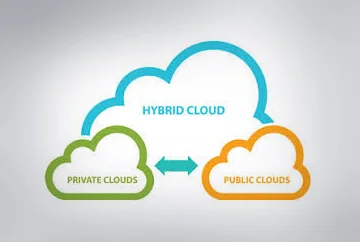The IT service management skills needed for consumption and provision of services will call for significant change management at both the customer and the supplier ends. The competencies needed will be much wider than technical capabilities and / or siloed command and control mindsets. The times call for leadership which can influence than command which can motivate than control. The use of audio visual technologies and collaboration tools will become all pervasive and critical to the success of service provision and consumption.
"One of the key changes that we foresee in the post-Covid-19 world is a wider acceptance and appreciation of remote modes of working and provision of services. During the crisis without exception, everyone who has been working from home has been consuming services provided remotely and the same set of people have provided their services to their customers remotely!"
Studies suggest that in any large enterprise with a complex vendor ecosystem there are in excess of 10 strategic vendors on an average and frequent transition of services happen. The start of failure of most outsourced engagements doesn’t happen during the steady-state but the foundation for such failures is laid during the transition itself. Lets try and look at the affects of this new normal onto transition of services in the future.
It will be important for the service providers and customers to ensure the following are in place before embarking on these new-age transitions-
Skill
the emphasis will be on the IT service and transition management skills with distributed agile experience
Processes
lay down the processes for such remote transitions for every stage of the transition – taking the variations into account for remote interactions, Security and data protection agreements and Knowledge Management processes
Technology
remote interaction platforms, network bandwidth at remote locations, backup plans for network failures and knowledge management platforms
The following table gives a summary view of what will be relatively important in the new world during such service transitions:
|
What was Important
|
What will be Important
|
|
Travel logistics to client & incumbent locations
|
Bandwidth and backup connectivity for staff at remote locations
|
|
Transition planning and time scheduling
|
Transition planning, Time Scheduling and Tool efficacy testing and backup planning
|
|
Transition meeting notes
|
Session recordings and shared storage locations for team access
|
|
Re-doing sessions with current service personnel
|
Replay the session recordings
|
|
Watching over the shoulder of current service personnel
|
Screen share and online recording of shadow support sessions
|
|
Time management alone
|
Time and Productivity management
|
|
Knowledge Management is typically a separate stream – managed separately
|
Knowledge Management is built into the process with the usage of collaboration tools – management of knowledge moves to being Governance of knowledge
|
|
Team Management is key
|
Distributed team management and agile mode of working
|
|
Site / ODC level security
|
Security at the distributed points of service delivery
|
|
Technical checklists and effective knowledge transition
|
Technical checklists and effective knowledge transition AND change in work culture
|





